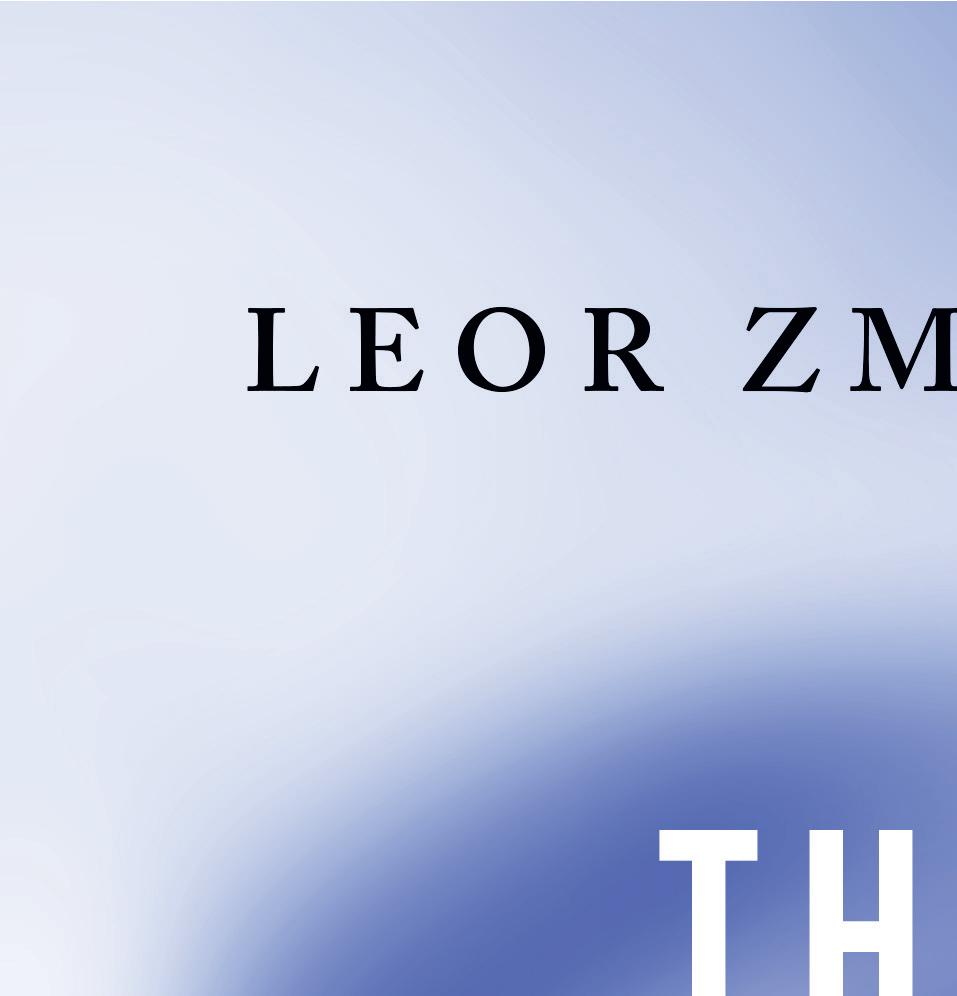
‘Extraordinary, eye-opening, startlingly original’ CASS R. SUNSTEIN
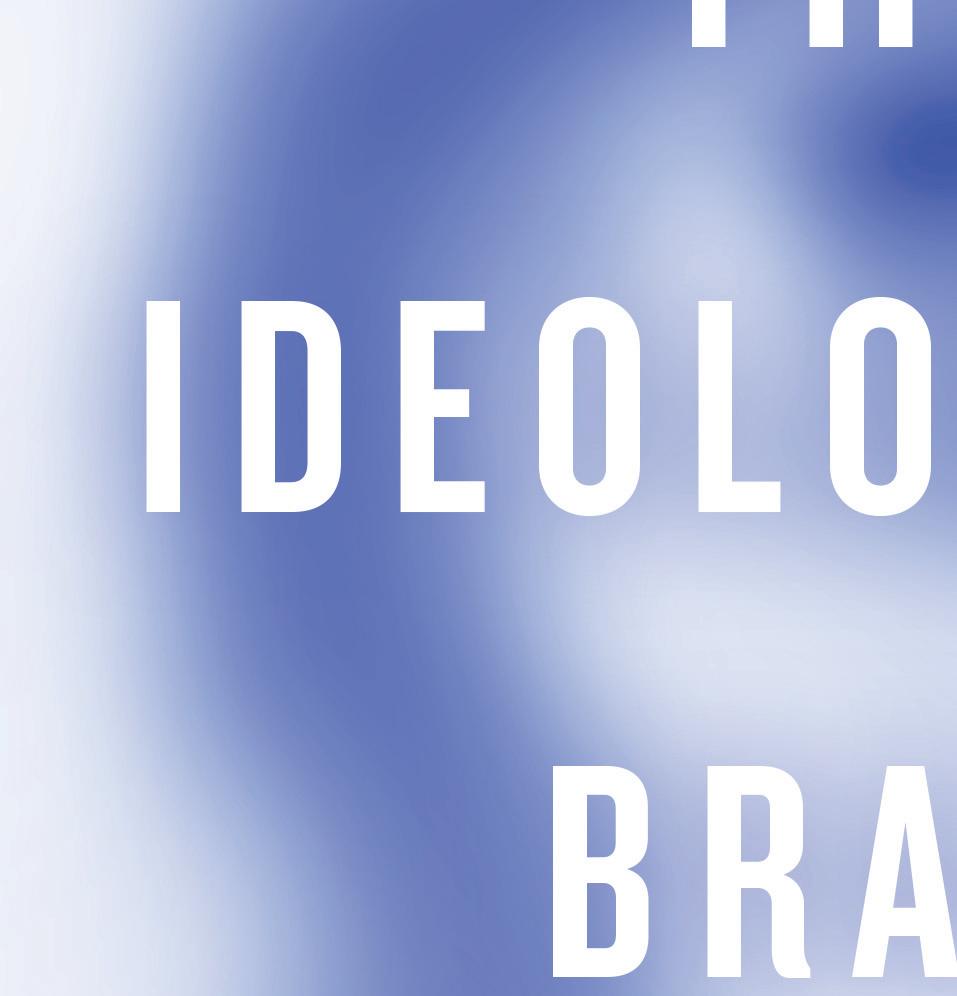
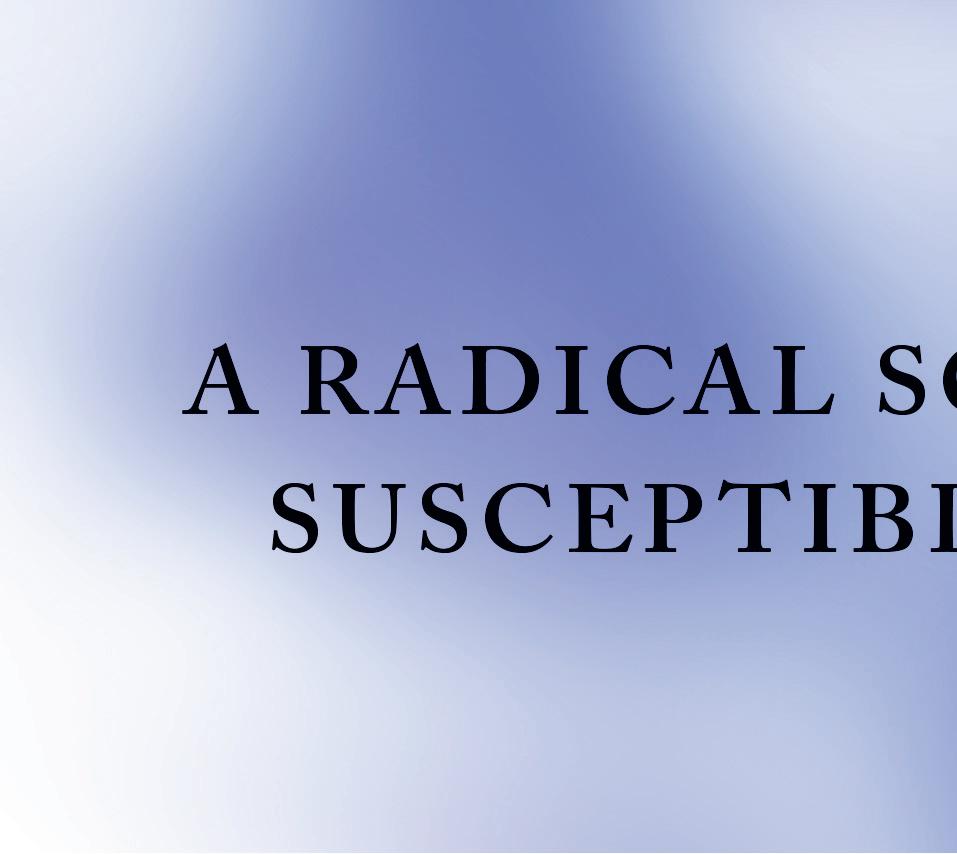
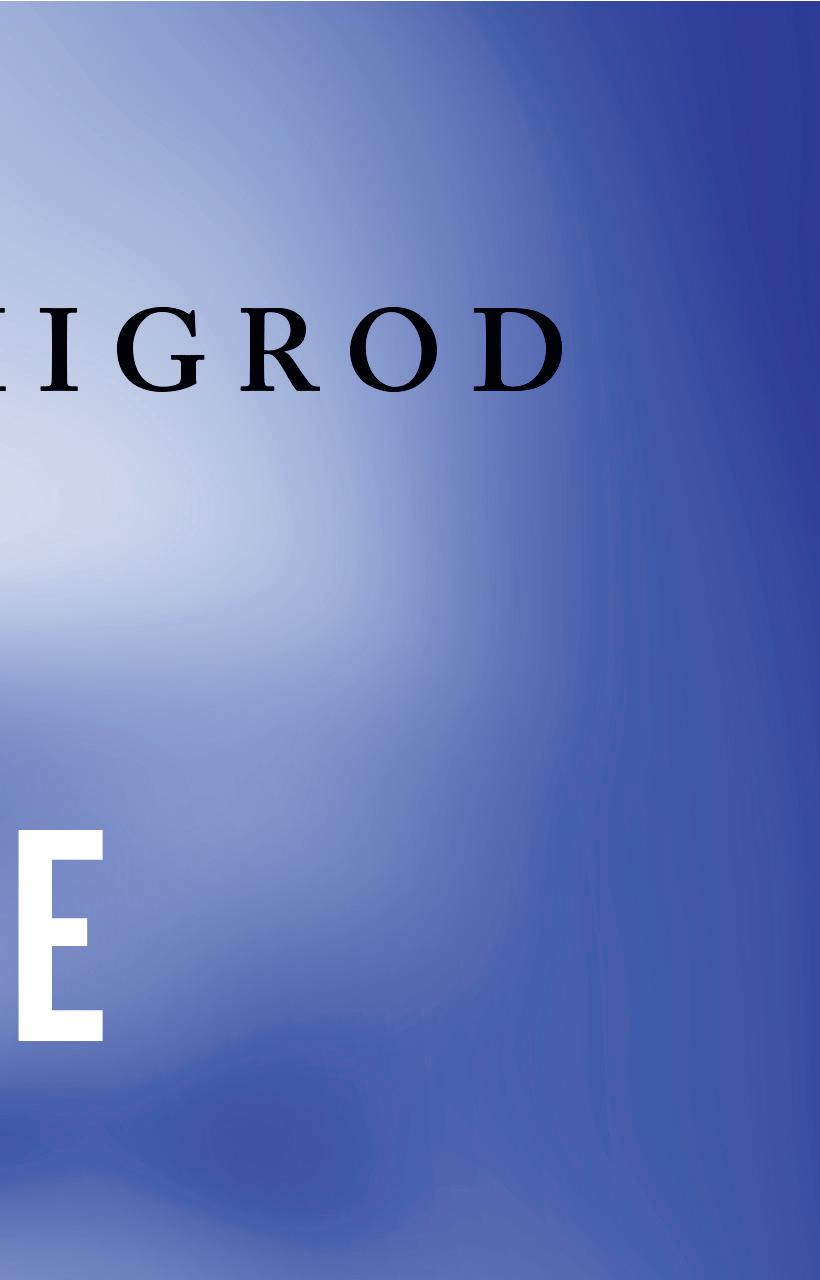
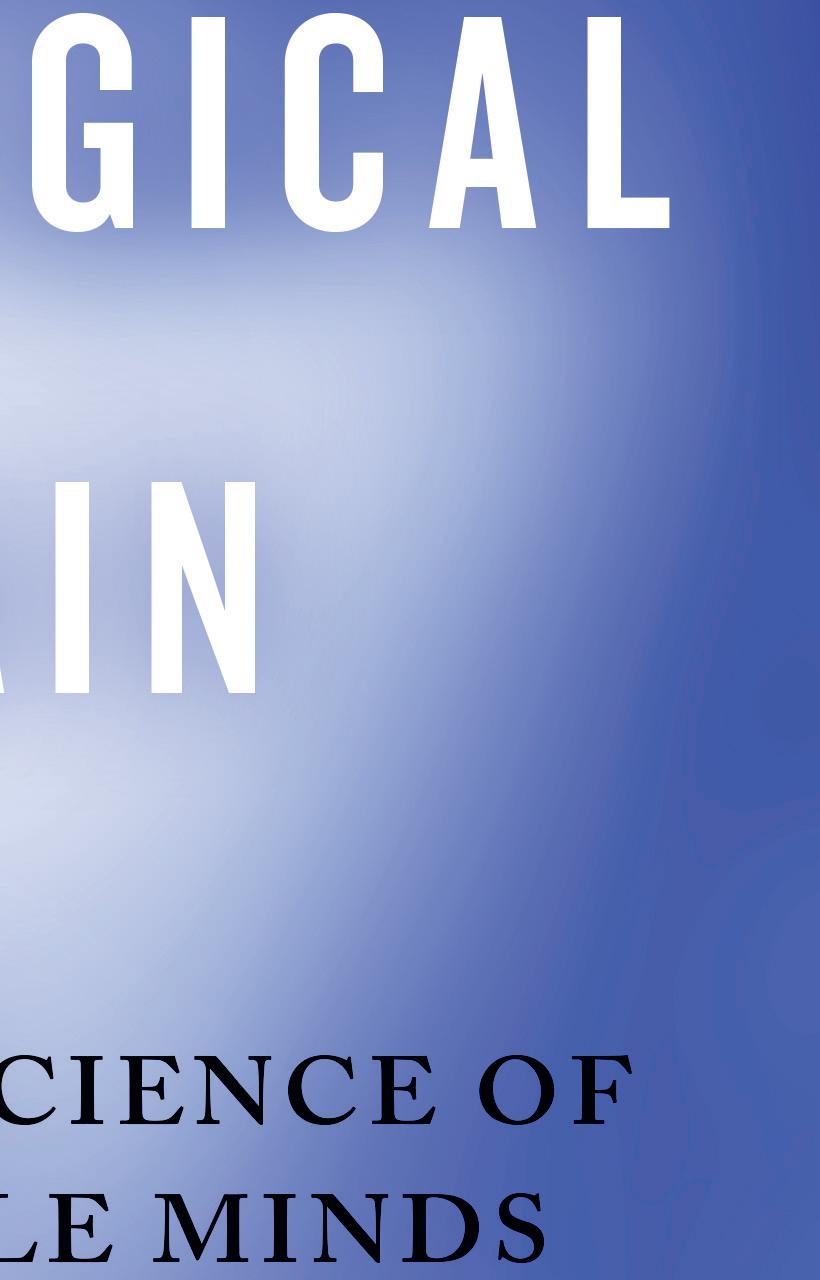
‘Fascinating, insightful, lucidly and entertainingly written’ A. C. GRAYLING



‘Extraordinary, eye-opening, startlingly original’ CASS R. SUNSTEIN




‘Fascinating, insightful, lucidly and entertainingly written’ A. C. GRAYLING

UK | USA | Canada | Ireland | Australia India | New Zealand | South Africa
Viking is part of the Penguin Random House group of companies whose addresses can be found at global.penguinrandomhouse.com
Penguin Random House UK , One Embassy Gardens, 8 Viaduct Gardens, London sw11 7bw penguin.co.uk
First published 2025 001
Copyright © Leor Zmigrod, 2025
The moral right of the author has been asserted
‘Children of Our Age’ from Map: Collected and Last Poems by Wisława Szymborska is published in English translation by Houghton Mifflin, 2015 © Houghton Mifflin Publishing Company. Courtesy of HarperCollins Publishers. All Works by Wisława Szymborska © The Wisława Szymborska Foundation, www.szymborska.org.pl
No part of this book may be used or reproduced in any manner for the purpose of training artificial intelligence technologies or systems. In accordance with Article 4(3) of the DSM Directive 2019/790, Penguin Random House expressly reserves this work from the text and data mining exception.
Set in 13.5/16pt Garamond MT Std Typeset by Jouve (UK), Milton Keynes
Printed and bound in Great Britain by Clays Ltd, Elcograf S.p.A.
The authorised representative in the eea is Penguin Random House Ireland, Morrison Chambers, 32 Nassau Street, Dublin d 02 yh 68
A cip catalogue record for this book is available from the British Library
hardback isbn : 978–0–241–74121–4 trade paperback isbn : 978–0–241–74122–1
Penguin Random House is committed to a sustainable future for our business, our readers and our planet. This book is made from Forest Stewardship Council® certified paper.
Dedicated with love to my family
All day long, all through the night, all affairs – yours, ours, theirs –are political affairs.
Whether you like it or not, your genes have a political past, your skin, a political cast, your eyes, a political slant.
Whatever you say reverberates, whatever you don’t say speaks for itself. So either way you’re talking politics.
Wisława Szymborska, ‘Children of Our Age’
All we need is conviction. Convictions offer us certainty – or, at least, the appearance of certainty when we are in fact unsure. Convictions reveal our deepest passions – or, at least, give us things to be passionate about. Convictions bring us together with other people through a common and dedicated purpose, creating a loving community out of mere strangers. How joyful! If all these convictions coalesce together into a worldview that is reasonably coherent, we can triumphantly declare that we have an ideology: a set of truths and moral principles that we live by and share with others. It’s easy!
Conviction is all we need. Whether our ideological mission is ancient or new, religious or secular, conservative or reactionary, communicated digitally or in the flesh, it prepares us to distinguish right from wrong, good from evil, an ethical decision from one that is foolish or selfish. Under the guidance of wise authorities, we imagine heavenly utopias to build on earth and devise strategies to avert oncoming disasters and moral catastrophes. We begin to embrace new symbols, adopt a new fashion, fit into a new family, participate in beguilingly opaque rituals, feel the ecstasy of dissolving into a collective that accepts our membership with jubilation.
Our brain – an organ that constantly seeks to understand
the world around us, to feel belonging with others – our brain is delighted by our newfound ideological possessions. What could possibly go wrong?
I sat in a darkened university laboratory – a tiny room enclosed by black walls. The dimmed lab was usually occupied by neuroscientists of sleep who laid participants down on makeshift beds and measured the electrical activity of their brains at rest, drifting off to dream. Yet I was interested in the opposite of slumber: I was there to detect the neural signature of choice, of free will. Over a long summer, I stuck electrodes on the scalps of participants and watched their brain waves dance on the monitor – fidgety lines climbing and collapsing, rendering invisible processes visible. In these experiments, I studied what brains look like when they obey commands as opposed to when they form free and spontaneous decisions. With the techniques of neuroscience, I learnt that obedient actions evoked neural activity patterns that were markedly different from free choices.
At the time, I was a psychology student at Cambridge interested in sensory perception and the neuroscience of free will. I was passionate about the potential of neuroscience to answer fundamental questions about human consciousness – what it feels like to be aware or unaware of a sensation, how unconscious impressions are formed – and so I volunteered as a research assistant for my professors’ research projects on weekends and holidays.
I spent the summer’s bright afternoons in a little windowless experiment room, gluing sensors to skin with sticky jelly, installing and reinstalling a lattice of metallic discs and wires on
participants’ heads. In the evenings I would analyse the results, zooming into one of the smallest units of neuroscience: the electrical potential that precedes every movement, voluntary or coerced. Under the glow of pixelated neural impulses, I searched for the subterranean, unconscious markers of human freedom.
But this was 2015, and outside the sunless laboratory room new forms of fundamentalism were on the rise. When I heard news about young British girls being drawn to go to Syria to join ISIS, a question tugged at me: why were these particular girls lured into extremism? Many commentators chalked it up to demographic factors and the dangers of the internet: the foolishness of youth, a lack of liberal education, the perils of financial or cultural precarity. But these felt like insufficient explanations. Many people endure socioeconomic and technological risks. Demography is not destiny. So why did these particular girls join an ideological war that led to their expulsion from home and the erasure of their freedoms? Why them and not others? Perhaps demographics and folk psychology could not capture the full story – maybe there was something about their brains that made these young people vulnerable. I was curious to see whether I could connect the cognitive and neuroscientific methods I had grown to love and apply them to the domain of politics – to questions about ideologies. Could a person’s susceptibility to extreme worldviews be rooted in the idiosyncrasies of their cognition and biology? Was it possible that human consciousness could be fundamentally altered by adherence to dogmatic ideologies?
Beginning my experiments in the tumultuous months following the United Kingdom’s Brexit referendum and just before the 2016 US presidential election, I was among the
first wave of scientists to use cognitive and neuroscientific methods to investigate the origins and consequences of ideological thinking. I recruited participants online who spanned all walks of life and held views that traversed the traditional to the ultra-progressive – from radical activists writing on right-wing platforms to German adolescents living in a reunified Berlin and elderly pensioners in remote British villages. I harnessed novel methods that would allow thousands of participants to complete the experiments from the comfort of their own homes, and I collaborated with international colleagues to collect brain scans and genetic samples of selected participants in university laboratories.
It was a rare choice to adopt methods that used cognitive assessments and brain-scanning technology to investigate ideologies. Only a handful of international research teams were interested in bringing the biological and political sciences together. It was a high-risk, high-reward research strategy. And it paid off.
With modern scientific techniques we are now able to ask how deeply into the architecture of the human brain ideological systems can penetrate – how far into the mind and body indoctrination really goes. We have discovered that the brain schooled by ideology is a brain worth exploring. A close study uncovers what ideologies can do to our bodies and how harsh moralities slip into the deepest recesses of human consciousness. It illuminates who has the potential for extremism; why some brains are particularly vulnerable while others are more flexible and resilient.
The young British adolescents who were radicalized in their bedrooms, at sleepovers, on smartphones, were extraordinary cases of ordinary processes – processes that every brain is susceptible to, and that some brains are more receptive to than
others. The clues for the differences in risk between us lie in our cells, our bodies, our personal narratives.
Although a dogmatic environment can produce habits and compulsions that appear to the outside observer to be passive and automatic – almost without thought – when we investigate the ideological brain we see that there are sophisticated and dynamic processes happening inside. Neurons buzz, fire in synchrony and shoot action potentials with every dutiful step. The origins of our ideological convictions emerge from within our bodies and the outcomes of our ideological beliefs can be felt and seen within our bodies too.
This book weaves together neuroscience and politics and philosophy to challenge our understanding of what it means to exist as human beings awash in dogmas, trying to stay afloat amongst raging orthodoxies. It can be read with different ideologies in mind – nationalistic movements, religious ideologies, racist worldviews, conspiratorial cults, ‘far right’ and ‘far left’ and political ideologies that are maybe not far away enough.
Although we will engage with the science of beliefs and the results of laboratory experiments, the critique of ideologies is not an exercise of pure reason. It has practical implications. It must reckon with people’s emotional investments, such as their love of tradition and history; of groups and collectivities; of principles and guiding moral laws and categories; of faith and dedication and of the people we hold in memory when we hear the word ‘ideology’. Many kinds of love are on the line. The stakes are immeasurably high.
This book conveys a new and radical science that urges us to reimagine our ideologies and the risks involved in adopting rigid ways of thinking. It reveals that our politics are not
superficial: our politics can become cellular. We will zoom into the ideological brain with a scientist’s microscope, a philosopher’s concern, a humanist’s hope and an active citizen’s empathy and imagination – hoping that in the contrasts of openness and hate, revision and tradition, evidence and imposed fates, we will uncover what the free, authentic, and tolerant brain looks like too.
We say people ‘have’ an ideology, as though it were a suitcase or a banana. Like objects we can hold, cherish, or discard, ideologies are imagined as being external to us. Sometimes we exchange an old ideology in favour of a newer, shinier one. Other times we are the evangelists trying to push an ideology into the palms of the unconvinced. Take it!
We barter and trade these ideological possessions, boasting about the values of our latest acquisitions. Yet maybe we are mistaken in thinking that ideologies are goods we hold, baggage we carry, that ideologies somehow exist outside of us.
We possess beliefs, yes, but we can also become possessed by them. With powerful measurement tools, it is now possible to see the consequences of ideological rigidity all the way down to human perception, cognition, physiology, and even neural processes. Our bodies are not impervious to the ideologies that surround us: what we believe is reflected in our biology.
Unlike the impressions left in sand, ideological imprints are difficult to erase. Our most recent scientific discoveries illustrate that human brains soak up ideological convictions with vigour and thirst. After all, our brains are magnificent organs that learn from their environments easily. Dangerously quickly. So when submerged in dogmatic systems, our bodies willingly absorb such rigidities. Repeating rules and rituals, rules and rituals, has stultifying effects on our minds. With every reiteration and rote performance, the neural pathways
underpinning our habits strengthen, whereas alternative mental associations – more original yet less frequently rehearsed – tend to decay. While many of us intuitively know that ideologies dictate our social behaviours and moral sympathies, it is less well known that the repetition of ideological rules and rituals cascades into our cells.
Immersion in rigid and authoritarian structures is not simply a social or political problem. It is a profoundly personal problem for each of us. Ideologies can endanger the health of our minds and our capacities for authenticity. Our bodies learn to embody ideological convictions in deep and troubling ways. Unless we understand what ideologies are and what they do to us, different extremisms will emerge and mutate, advancing unhindered into our open and tolerant societies. And until we uncover how the brain metamorphoses under the grip of ideological doctrines, genuine freedom will continue to elude us.
Ideologies are sold to us as timeless and fixed, but they are in fact highly fluid and mobile. These clusters of ideas are perpetually changing, taking on novel guises in every generation. Ideological worldviews can switch sides and policy preferences. Parties of tradition campaign for radical reform while progressive movements hesitate to innovate. Guns are lifted in the name of life. Slogans for peace are used to camouflage regressive violence. Terrorism can hijack the fight for freedom and demands for freedom can appear terrorizing. Battles over ideologies resemble language games. Words are thrown about, rhetorical devices are hurled at opponents and narrowly sidestepped. Reactionary, revolutionary, conservative, progressive, conspiracist, supremacist, racist, radical, bigot. We rarely know what these labels mean or to whom they rightly refer. George Orwell observed that ‘political language . . . is designed to
make lies sound truthful and murder respectable, and to give an appearance of solidity to pure wind’. We assign people and ideas into neat categories in the pursuit of clarity and identity. Our neighbour is a fanatic! Our teenager is a fool! Such taxonomies delight and shock us. Yet these linguistic buckets mask the realities of ideologies as they are lived – messily, hypocritically, proudly, self-destructively – with loss, joy, humour, regret, fear, reversals, retractions, ruminations, intimacy, and grief – with tears and lamentations, beaming smiles and confused sideways glances.
Despite the complexities and contradictions, there are commonalities in how ideologies are practised and preached, regardless of their aims or their claims. Whether nationalist or racist or religious, there are parallels in how all ideologies infiltrate human minds. These resemblances are not coincidences; they are inherent to the structure of ideological thinking. As the political thinker Eric Hoffer observed in The True Believer, ‘there is a certain uniformity in all types of dedication, of faith, of pursuit of power, of unity and of self-sacrifice’. While ideologies might be dressed in different colours or costumes or flags, there is evidence that across different ideological groups the mechanisms of ideological coercion are largely the same.
To detect the psychological similarities across ideologies, we need a sense of what an ideology is and what it is not. In its simplest formulation, an ideology is a kind of narrative. A compelling story about the world. Yet not all stories are ideologies, and not all forms of collective storytelling are rigid and oppressive. There is a difference between culture and ideology. Ideologies offer absolutist descriptions of the world and accompanying prescriptions for how we ought to think, act, and interact with others. Ideologies legislate what
is permissible and what is forbidden. Unlike culture – which can celebrate eccentricities and reinterpretations – in ideology, nonconformity is intolerable and total alignment is essential. When deviation from the rules leads to severe punishment and ostracism, we have moved away from culture and into ideology.
From fascism and communism to eco-activism and spiritual evangelism, ideological groups offer absolute and utopian answers to societal troubles, strict rules for behaviour, and an ingroup mentality through dedicated practices and symbols. These features exist across the spectrum of ideological persuasions. Such characteristics can emerge even when the ideology is guided by the sincerest intentions and noblest ideals – even if it claims to protect human dignity or flourishing.
Typically, ideologies are imagined as big visions. Grand and atmospheric. Intangible and out of our personal control. Few of us can outline the precise tenets of pompously upper-cased Conservatism, Liberalism, Fascism, Communism, Capitalism, Racism, Sexism, Theism or Populism, with all their myriad meanings and interpretations. As though from the heavens, these -isms describe the contours of life and prescribe human action, instructing us about the cosmos and how we ought to relate to others within it. For believers, the utopian destiny of an ideology seems carved from the clouds of eternity. A looming force soaring above our heads, meant to be venerated and revered.
The image of ideologies as celestial and static has always troubled me. Ideologies coexist amongst us, within us, on earth. Not in the skies of history or the towers of political elites. There is no transcendent plane on which they live; no altitudes from which attitudes descend fully formed and
holy. Ideologies inhabit individuals. Individual minds convert social doctrines into ideological thinking, a style of thinking that is governed by strict mental rules and carefully regimented mental leaps.
While most definitions perceive ideologies as historical currents and sociological movements, I am interested in examining ideologies as psychological phenomena instead. This psychological lens allows us to ask what an ideology does to its believers and whom it most easily attracts. By spotlighting the processes happening within individual brains, we can probe when an ideology constrains its followers’ mental lives and whether it can ever liberate them.
Even if an ideology seems righteous, ethical, vital, urgent or beautiful, I believe it should be examined closely. We can study an ideology’s structure, its genesis and effects, what it alters in adherents’ minds. We can scrutinize what, in a mind, an ideology fractures or silences; which biological and mental processes an ideology distorts. Does the ideology impose a tight grip on believers’ brains? Or does it let them wonder and wander freely?
Every worldview can be practised extremely and dogmatically. Every kind of cultural narrative used to explain the world can tip into a totalizing ideology. As a result, inquiring into what an ideology urges us to think is insufficient; we need to analyse how it makes us think too. When an ideology demands rigid and ritualistic thinking, it demands that we bias our vision, twist our gnawing doubts into silence, surrender our subjectivities and creative possibilities. When an ideology demands rigid and ritualistic thinking, it demands that we become someone else. Someone less singular and unique, less curious, less free.
Traditionally, we judge an ideology based on its merits,
faults, and leaps of logic. Bias, bias, bias, we announce. Mining our opponents’ belief systems, we unearth contradictions and hypocrisies. Different layers of naivety or callousness or ignorance that deserve scorn or ridicule. We criticize the viewpoints of our adversaries for their legal or economic assumptions, their social ills, or historical similarities to older worldviews.
I hope to show that we can challenge ideologies on different terms – on the terms of the single individual. The individual brain. I believe that we can judge an ideology based on what believing in it does to human bodies and brains; on whether being a passionate believer narrows our movements, lassoes our flexibility, restricts our responses or triggers us to commit violence. If we have less scope for plasticity and change and less direct access to our sensations, we are at risk of dehumanizing ourselves and others. We become less sensitive, less elastic, less authentic. If we see reality through an ideological lens, we end up avoiding the richness of existence in favour of a more reduced, stereotyped experience. By studying the ideological brain with neuroimaging devices and cognitive tests, we can illuminate previously invisible forms of domination. With the tools of science, we can develop new ways to critique ideologies. Perhaps some ideologies will pass our critical tests. Many will not. We might accidentally become suspicious of our most treasured ideological possessions. A science of ideology can inspire us to question our idols, our icons, our metaphors, our imagined utopias. It can stimulate careful analysis and honest self-reflection. It can even become the basis for personal or social action. Examining the neurocognitive origins and consequences of our beliefs – where they come from and how they transform our bodies – will offer
clues regarding the kind of belief systems we might wish to keep and which ones we might be persuaded to let go.
Believing passionately in a rigid doctrine is a process that spills into our neurons, flowing into our bodies. Ideologies are not mere envelopes for our lives; they enter our skins, our skulls, our nerve cells. Totalizing ideologies shape the brain as a whole, not simply the brain when it is confronted with political propositions or debates. Science is beginning to reveal that the profound reverberations of ideologies can be observed in the brain even when we are not engaging with politics at all. Since our brains learn to embody indoctrination in deep and insidious ways, the social rituals we learn to enact can become the biological realities of our minds and bodies. There is therefore a danger that when an individual is immersed in rigid ideologies, it is not only their political opinions and moral tastes that are being sculpted – their entire brain is being sculpted too.
I invite you to sit down on that grey chair – yes, the one at the desk – and make yourself comfortable. I point to the monitor in front of you and say this is where the experiment will happen. Soon, when I leave the room, you will see instructions pop up on the screen. Please read the instructions carefully. If you have any questions, ring the bell or simply raise your arm and wave, and I’ll be right with you. The whole experiment will last a few minutes. As per ethics regulations and protocols, you are free to stop the experiment at any time, but please try not to.
Does that sound good?
You nod tentatively.
Perfect. Good luck!
Please press ENTER when you are ready.
You ENTER .
Hello! Welcome to the experiment. Today you will play a series of brain games and problem- solving challenges. For the first game, you will be presented with a deck of cards. Each card will be painted with a number of geometric objects of a specific colour and shape. For instance, you may encounter a card with three red circles or a card decorated with a single blue triangle.
The game is a ‘card-sorting task’. A card will appear at the bottom of your screen. Imagine it is painted with four orange squares. You need to decide how to match it to one of four cards already at the top of the screen.
✓♪ You will hear a happy jingle when you choose the CORRECT match.
✗♪ You will hear an angry beep when you choose the INCORRECT match.
Be as accurate and as quick as you can.
Please press ENTER if you understand the instructions.
Press ESCAPE if you wish to read the instructions again.
You ENTER . Your first card has three green stars. You try to match it with the card at the top of the screen decorated with the two blue stars. Maybe stars should go together with other stars.
BEEP !
You sigh. You try again. Maybe your three green stars should be paired with the card containing four green circles? Green-on-green?
Drag, press, release and . . . happy jingle! You are right! You shrug proudly to yourself. Green-on-green. Easy.
Next card in your deck: one red triangle. You follow the rule: pair colour with colour. You place red on red and . . . jackpot! Jingle again.
You like this rule. You apply it on the next round and the next. Green-on-green, red-on-red, orange-on-orange, blue-on-blue.
The habit is oddly fulfilling. Sliding cards to their rightful grouping, you barely need to think. It becomes wonderfully automatic. Colour. Colour. Colour. Moments ago you were new to this world and now you are its master.
All you see are primary colours. You forget the other features of the cards. Nothing else matters.
You click, you match, you hear the saccharine jingle.
Colour – jingle. Colour – jingle. Pavlov would be proud. You develop a ritual and it’s glorious. It offers you control.
After five, or ten, or fifteen rounds – repetition blurs the boundaries of time – the next card in your deck has two blue squares. You know what to do. Go for the blue card at the top of the screen. Caressing the mouse, you point the cursor and shoot, waiting for the chime, anticipating the dopamine rush.
BEEP !
An angry, unexpected noise is emitted from the speakers. You feel betrayed. You forgot the game world was capable of such an offensive sound. It’s insulting.
Maybe it’s just a glitch.
You select the blue card again. It’s second nature to you now, blue-on-blue.
BEEP !
How can this be? The game world’s inconsistency is like an astonishing infidelity. It makes you want to get up and leave the experiment room.
But you are an addict now. The jingle gave you the feeling (the illusion? ) of control, of self-possession. It signalled your cleverness.
And now abandoned, you have no anchor, no habit, no ritual to turn to. In this suddenly desolate virtual land, what will become of you?
In a mad rush you drag the two-blue-squared card towards the three-orange-circled card – there is nothing unifying these cards, not number or colour or shape, but you don’t care, you are annoyed. BEEP ! The noise barely dissipates before you are lugging the card again, this time towards the four-green-starred card. BEEP ! Outraged at this rebellion, you move the mouse in fast, frenzied motions. You thought you had a deal with the game world. An understanding. Common ground on which to play. The rules are not supposed to change halfway through the game. You haul the card to the last unexplored option, swearing to yourself that if this isn’t a match, if the jingle doesn’t return, you will storm out of here in protest, you will wave your arm in the air to call the experimenter back in the room and demand answers, you will – jingle! It worked! You strain your eyes to see why the longed-for tune returned, what the matching card was. It was two red triangles. Two. Two! Hah! The number of shapes on the card was the same as on the card you held. Hallelujah! Maybe order will return once more. Or maybe this iteration of the task was just a bug. A mere hiccup. Next time a card pops up on the screen, should you obey the original tradition, follow the colour code, or try this new pattern, count the numbers and sort anew? Should you stick to your guns – ignore the anomaly – or should you change, explore, adjust, adapt, revise and realize that –
This is where I step out of the experiment and tell you that your natural reaction to the change can tell me almost everything about you. Your spontaneous response to the fact
that the old rule stopped working and you needed to discover a new one to survive is a kind of inadvertent confession. In this simple game of stars and circles, you have accidentally and inevitably exposed your innermost beliefs.
Why? Because there are two of you. There is the participant who notices the change in the rule governing the game and responds by changing in line with the new demands of the task. This version of you is the adaptable, cognitively flexible individual. When the world changes, you may feel surprise but you have no fear. You change with the times, with the demands of the environment. You are not strongly rule-bound. You are happy to slip between habits. In fact, you don’t mind having no habit at all. You easily switch between modes of thinking; you are fluid; elastic; you adapt. However, there is another you. In this version of you, you hate the change. You notice the fact that the old rule no longer works, and you refuse to believe it. You will try again and again to repeat the first rule, but it will be in vain. In fact, you will be punished every time you repeat the original habit. The unnerving BEEP will hit you like a slap in the face. But you won’t move, won’t dodge the blow. You will remain immobile, hanging on tightly to the false belief that somehow the wrathful beep will dissipate and be replaced by a jolly melody. The false and nostalgic belief that the environment around you will magically return and so you don’t need to change. You persevere even when it would be faster to sever ties with the past and move on. This is the cognitively rigid version of you.
Which of these copies of you are you? The flexible or the rigid? The adaptable or the stubbornly unmoving? Maybe you are neither the first nor the second. You could be somewhere in between: sometimes adaptable,
sometimes rigid. Maybe your flexibility depends on circumstance. At ease, you are fluid, adjusting calmly to novelty or surprise. Yet in moments of stress, your movements narrow, your thoughts harden. Anxiety solidifies you, rendering you stiff.
What I, the experimenter, the scientist, have discovered is that how you perform in this game can give me clues about your whole approach to life. Your level of rigidity in this neuropsychological test foreshadows the rigidity with which you believe in ideologies in the social and political world. Your perceptual reflexes are linked to your ideological reflexes.
In fact, your brain comes to mirror your politics and prejudices in strange, profound, and astonishing ways – ways that challenge how we understand the tensions between nature and nurture, risk and resilience, freedom and fate. If our ideological beliefs are related to our cognitive and neural patterns of responding, then we must face new questions about how our bodies become politicized, and in what ways we are capable of resisting, changing, and exercising personal agency.
When my colleagues and I invited thousands of people to complete cognitive tests of mental flexibility such as this game, called the Wisconsin Card Sorting Test, we found that the people who are the most behaviourally adaptable on neuropsychological tasks are the same people who – in the realm of ideologies – are most open-minded, most accepting of plurality and difference. The people with the most flexible minds are the people who acknowledge that the intellectual realm can be separated from the personal realm. They do not viscerally hate their interlocutors – they may hate their opinions but they do not project that hatred onto the persons
voicing them. In contrast, the most cognitively rigid individuals, those who struggle to change when rules change, tend to hold the most dogmatic attitudes. They hate disagreement and are unwilling to shift their beliefs when credible counterevidence is presented.
Cognitive rigidity translates into ideological rigidity. This may seem obvious to some: a rigid person is a rigid person. But in fact, these patterns are not obvious. When neuroscientists talk about cognition and perception, we are talking about information processing that deals with simple stimuli, with basic sensory information in neutral contexts. Cognitive tasks are composed of uncomplicated elements – coloured shapes and moving black dots – displayed on spare, undecorated screens. Through these tasks, we are not assessing how you deal with emotionally evocative or triggering information – information that genuinely scares you or makes you feel a sour pinch of disgust. We are not studying tasks that are too cognitively demanding or complex – ones that would exasperate you needlessly. When neuroscientists measure cognition and perception, we glean individual differences in how a brain forms decisions, learns from the environment, and responds to challenges or contradictions at the most foundational level.
These individual differences are implicit; we have little conscious access to them or control over their expression. A cognitively rigid person may insist that they are spectacularly flexible, and an adaptable thinker may believe that they lack mental malleability. It is astonishing how rarely we know ourselves.
As a result, the link between mental inflexibility and ideological rigidity reveals a critical insight about how our brains work and how ideologies penetrate human brains. It suggests